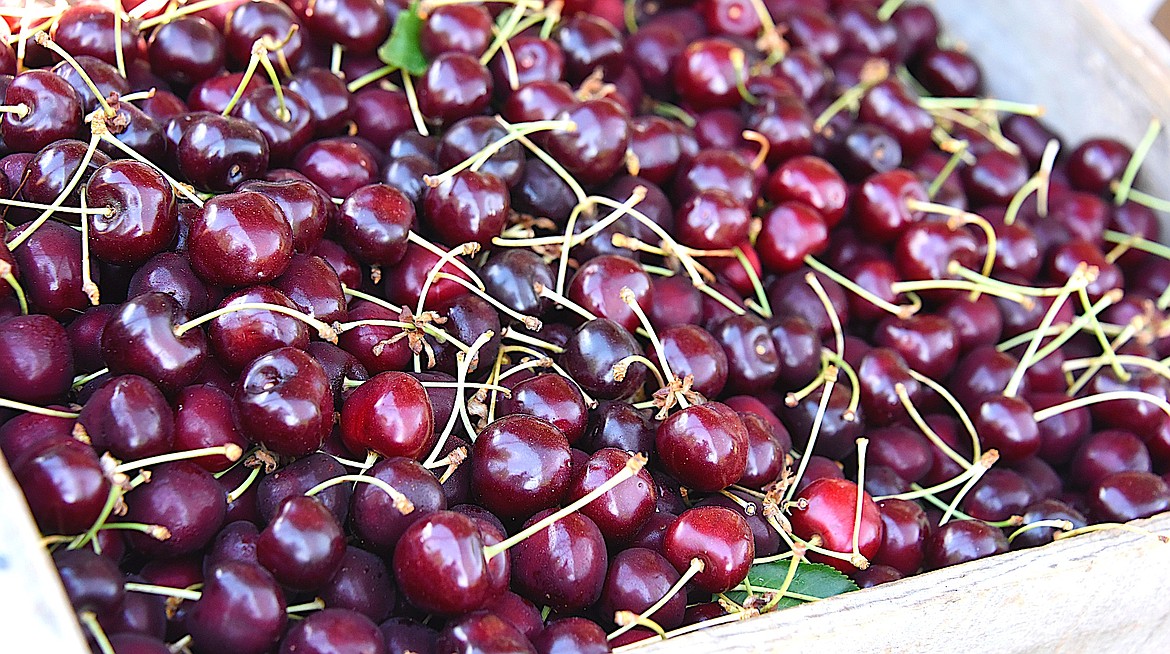Cherry crop damaged by January deep freeze
January’s cold spell has returned to haunt Flathead cherry growers.
“It’s something I’ve known since the day after the hard freeze,” said Finley Point orchard owner Brian Campbell of the impact the cold had on cherry trees.
Most Mission Valley residents remember high heating bills and battling frozen pipes during the cold snap in January. According to the website Weather Underground, records for the Glacier Park Airport in Kalispell show the mercury dropped to a high of 10 below zero and a low of minus 32 on Jan. 12 and ranged from minus 5 to minus 15 until Jan. 16, when the thermometer finally crept up to a high of 7 above and a low of minus 9.
Campbell, who says it was 21 below zero on Finley Point, is a Monson Fruit Company field representative for this area and also advises the Flathead Cherry Growers Co-op members.
Cherry flowers start developing right after harvest, Campbell explained, although the flowers are microscopic at that point. The flowers can live through a hard freeze, he said, but when the deep cold arrived in January, they hadn’t been dormant long enough.
“Up until that time we had lots of temperatures above freezing,” Campbell noted. “In November and December, nights were 28 degrees or so, and the flowers and buds weren’t hardened off. If they are hardened off, the buds build up ‘antifreeze,’” he said, meaning the sugars get more concentrated in the bud and help protect the fragile new growth.
The temperatures were even more frigid further north than on Finley Point. Campbell heard that a hops grower north of Bigfork saw temperatures of 30 below zero, while Kalispell’s thermometers dropped as low as minus 35.
As people who live here know, temperatures around Flathead Lake vary from area to area, and “Blue Bay was the one bright spot,” Campbell said. “It’s not too bad – but still bad.”
The coldest temperature recorded at Blue Bay during the January freeze was minus 16, Campbell said. According to cherry growers he talked to in the area, some orchards there will produce a crop.
In some orchards up north, which are part of the Flathead Cherry Growers Co-op, owners had “lots of tree damage.”
In most orchards, just the flowers within the bud were killed, but sometimes whole flower buds froze. According to Campbell, the tree can survive if just the flower freezes, but if the entire bud is killed, it’s gone for good. An entire branch of a cherry tree with dead buds will create a blank spot on the tree with no leaves or flowers.
Also, if the tree tissue freezes, the sap within the tree can’t flow through the damaged area and will ooze out and make cankers. If a tree's trunk freezes and and splits open, the whole tree or part of it may die.
“What we’ll see is a lot of bud kill in the old Lambert trees,” Campbell said. “In my orchard, I have Lambert trees that are 56 years old and may be getting weak. Some of them won't survive.”
Canadian growers hit hard too
Campbell noted that Flathead Lake growers established a niche in the sweet cherry market by producing some of the latest ripening cherry varieties. When Washington growers started planting Lamberts, Flathead growers had to plant even later-ripening varieties to try to keep up.
Many turned to Canadian cherry varieties, developed at the Agriculture and Agri-Food Canada’s Summerland Research and Development Center. Some of those varieties now grown in the Flathead are Skeena, Sweetheart and Lapins.
This winter was a bad one for Canadian cherry growers too; the weather hit them hard, wiping out trees they’ll have to replant. It takes about seven years for new trees to begin producing.
Since Canada is the Flathead’s biggest competition for late-ripening fruit, one sliver of silver lining could be that the surviving Flathead cherries will have a better market in the next few years while the Canadian trees grow.
Some Bigfork cherry growers will have to replant also. One grower lost 100 to 200 new trees, which will all need to be replaced.
Although there are no co-op growers on the west side of Flathead Lake, Campbell noted it’s safe to say they were hit just as hard if not harder by cold temps.
Yes, there will be cherries
There are hurdles to overcome for orchards that may produce fruit this summer, Campbell explained. One is the June drop, when a lot of the fruit that looks like it’s set doesn’t make it and drops off in the coming month.
“There will be some cherries,” Campbell said. “There will be a few stands open.”
“But as far as a commercial harvesting for the cherry co-op, I’m sure they won’t be sending fruit to Washington,” he added.
He predicted Monson Fruit would send over just one semi-load of cherries, instead of the truckloads that typically roll out of the Finley Point packing plant in a normal year.
Campbell suspects growers might not want to bother with a tree with little or no fruit on it, 10 pounds or less, so some cherries will be left on the trees.
He also believes Washington and Oregon growers will have a decent crop, although those orchards furthest north might have a smaller harvest.
As far as economics go, most Flathead cherry producers grow cherries as a sideline so although a small crop is disappointing it’s not devastating. Orchardists who do custom work in the cherry groves will have a slow year, though.
In a normal year, Flathead growers supply less than one percent of the total cherry harvest in the Northwest, Campbell said.
The last hard freeze was 33 years ago – and while “the new normal for weather is abnormal weather,” he promises “the cherry trees will bloom again.”


